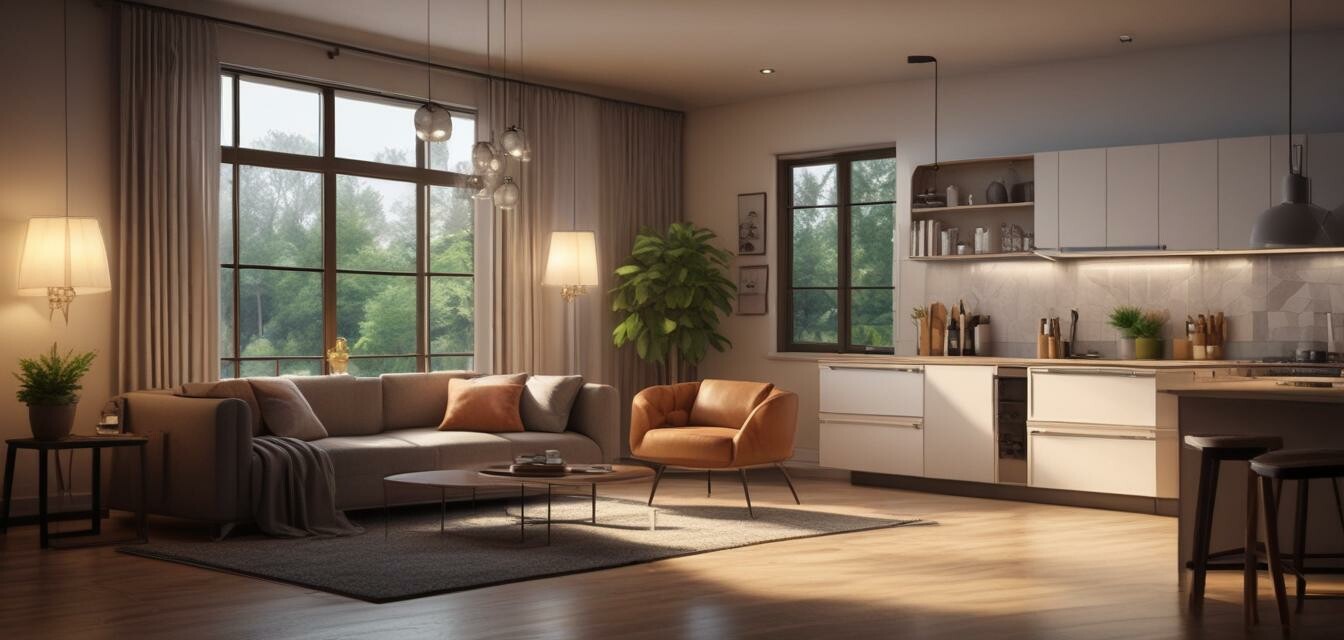
Simple Home Upgrades for Better Energy Efficiency
Key Takeaways
- Small upgrades can lead to significant energy savings.
- Opting for energy-efficient appliances reduces electricity bills.
- Proper insulation is key to maintaining home temperature.
- Smart home technology enhances energy management.
- Lighting upgrades can improve both aesthetics and efficiency.
Improving energy efficiency at home doesn't have to be a daunting task. With a few simple upgrades, you can make meaningful changes that will not only save you money on your energy bills but also create a more comfortable living environment. In this guide, we’ll explore easy home upgrades that can help you optimize your energy consumption. From advanced lighting to insulation and smart appliances, let's dive into practical solutions you can implement today!
1. Upgrade Your Lighting
Switching to energy-efficient lighting systems is one of the simplest home upgrades you can make. Here are some options:
- LED Bulbs: Long-lasting and less energy-intensive than traditional bulbs.
- Smart Lighting: Control brightness remotely using a smartphone.
- Dimmer Switches: Adjust light levels to match your needs.
Benefits of Upgrading Lighting
| Type of Lighting | Energy Consumption | Lifetime |
|---|---|---|
| Incandescent Bulbs | 60 watts | 1,000 hours |
| CFLs (Compact Fluorescent) | 15 watts | 10,000 hours |
| LEDs (Light Emitting Diodes) | 8-12 watts | 25,000 hours |
2. Insulate Your Home
Good insulation is essential for keeping heat inside during winter and outside during summer. Here’s where to focus your efforts:
- Attic Insulation: Upgrading your attic insulation prevents heat loss.
- Wall Insulation: Adding insulation in walls can improve overall energy efficiency.
- Sealing Air Leaks: Check for gaps around doors and windows.
How Insulation Saves Energy
Check out the table below to see how various insulation materials stack up in terms of R-value (the measure of thermal resistance):
| Insulation Type | R-Value per Inch | Material Cost |
|---|---|---|
| Fiberglass Batts | 2.9-3.7 | Low |
| Foam Board | 3.6-4.2 | Medium |
| Spray Foam | 5.0-6.5 | High |
3. Invest in Smart Appliances
Smart appliances are not only convenient but also promote energy savings. Consider these points:
- Smart Thermostats: Save energy by automatically adjusting temperatures based on your schedule.
- Smart Refrigerators: Monitor your food inventory and manage energy use efficiently.
- Programmable Washing Machines: Run during off-peak electricity hours.
Advantages of Smart Appliances
Here are some quick advantages of investing in smart appliances:
- Energy usage tracking
- Remote control features
- Energy-efficient settings
4. Optimize Heating and Cooling Systems
Heating and cooling usually make up a large portion of your energy bills. Here’s how to optimize these systems:
- Regular Maintenance: Change filters and service your HVAC system to keep it efficient.
- Consider Energy-Efficient Models: Look for ENERGY STAR rated heating and cooling systems.
- Use Ceiling Fans: Balance air temperature throughout your home.
5. Explore Renewable Energy Options
Depending on your location, renewable energy options might be accessible:
- Solar Panels: Generate your own power and potentially earn savings credits.
- Wind Turbines: Small turbines can be effective in rural settings.
Tips for Successful Upgrades
- Start small and gradually implement changes for a manageable approach.
- Research available rebates or programs that can assist with costs.
- Consult with professionals when necessary to ensure proper installation.
- Monitor your energy bills to assess the impact of your upgrades.
Pros
- Reduced energy bills
- Improved home comfort
- Environmentally friendly
- Can increase property value
Cons
- Initial cost may be high
- Some upgrades require professional installation
- Time-consuming implementation
Conclusion
By integrating these simple home upgrades, you can significantly enhance your energy efficiency and ultimately save money. Start with one or two changes, evaluate their effects, and then consider expanding your efforts.
For more great tips and ways to reduce energy usage, check out our Tips and How-to Articles and explore different products that can align with your energy efficiency goals.
Every small change counts in making your home more energy-efficient! Let's contribute to a greener planet together.
